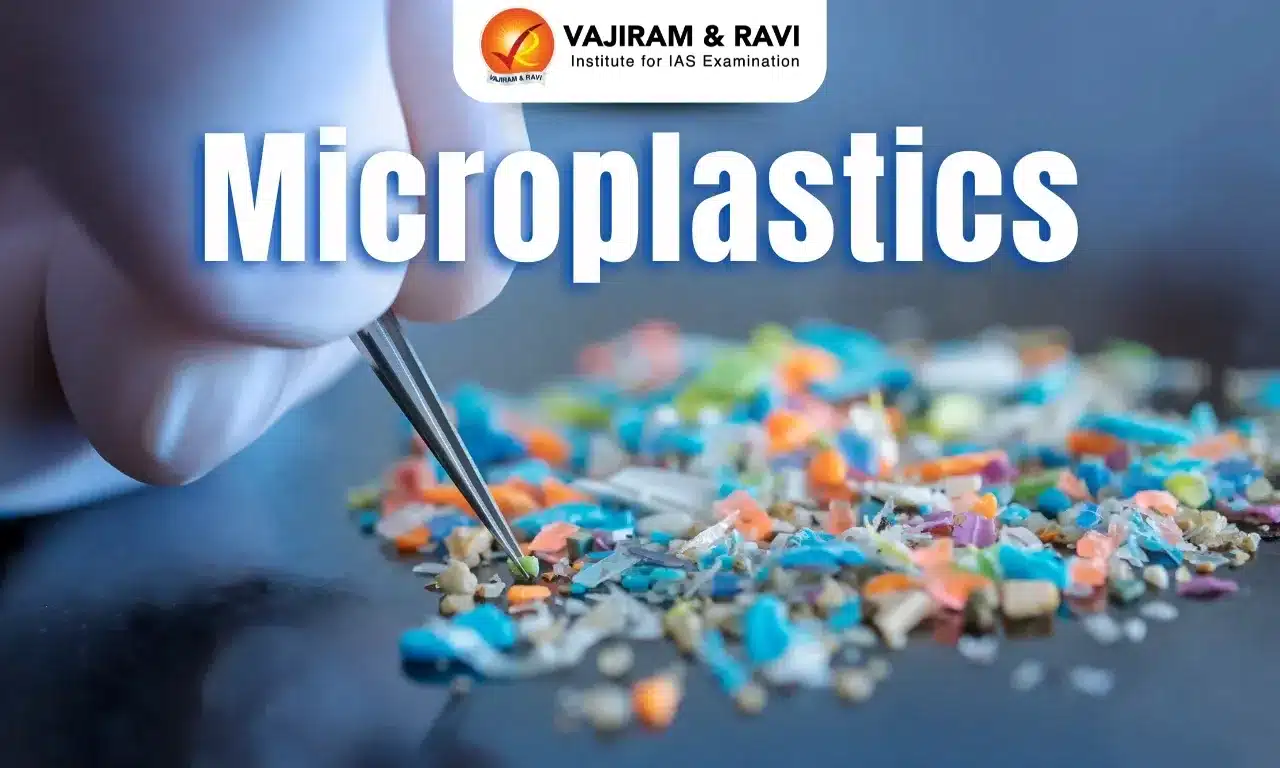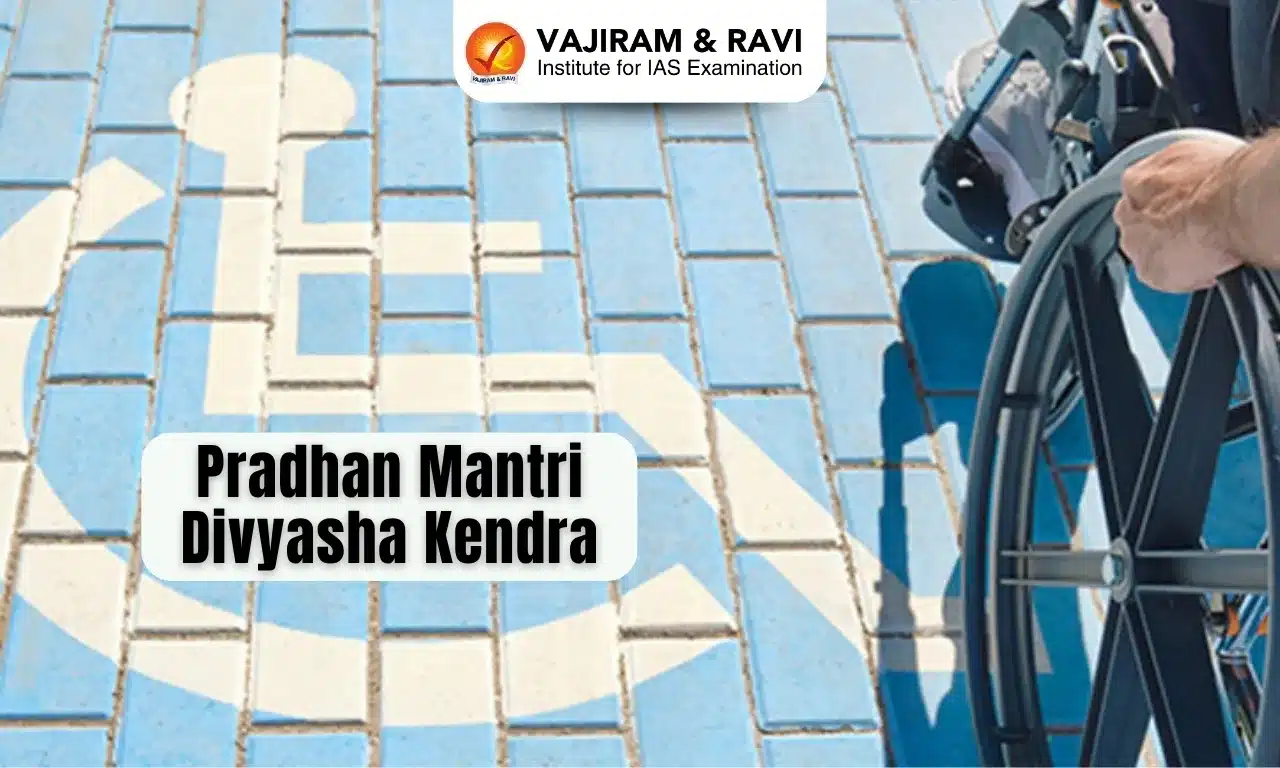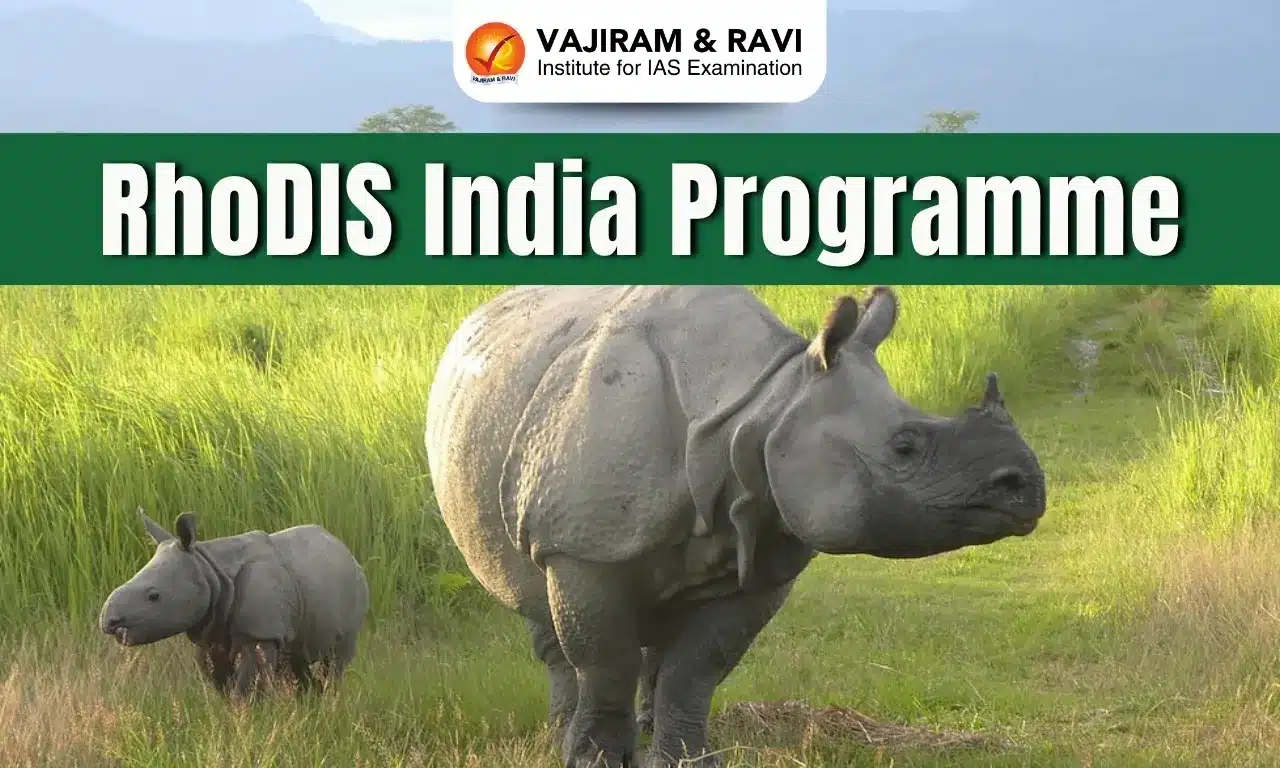Microplastics Latest News
A first-of-its-kind study commissioned by the Delhi government has detected microplastics in groundwater samples across the Capital.
About Microplastics
- Microplastics are small pieces of plastics, usually smaller than 5 mm.
- They are persistent, very mobile and hard to remove from nature.
- There are two categories of microplastics: primary and secondary.
- Primary microplastics are tiny particles designed for commercial use, such as cosmetics, as well as microfibers shed from clothing and other textiles, such as fishing nets.
- They enter the environment directly through any of various channels—for example, product use, unintentional loss from spills during manufacturing or transport, or abrasion during washing.
- Secondary microplastics are particles that result from the breakdown of larger plastic items, such as water bottles.
- This breakdown is caused by exposure to environmental factors, mainly the sun’s radiation and ocean waves.
Microplastics Impacts
- Once in the environment, microplastics do not biodegrade and tend to accumulate and persist.
- They can be ingested by marine organisms, leading to potential harm to aquatic life and bioaccumulation along the food chain.
- They can also carry toxic chemicals and pollutants, posing additional risks to organisms and ecosystems.
Microplastics FAQs
Q1. What is the main source of microplastics?
Ans. Where do primary microplastics come from? Microplastics come from synthetic textiles, city dust, tires, road markings, marine coatings, personal care products and engineered plastic pellets.
Q2. What countries have banned microplastics?
Ans. The Netherlands was the first country to introduce a ban on microbeads in cosmetic products in 2014. Several countries, including Australia, Canada, Italy, Korea, New Zealand, Sweden, the UK and the US have followed suit.
Q3. Is microplastics banned in India?
Ans. There is currently no regulation of microbeads in India , although the plastic waste management rules are regularly amended and there are some bans on single use plastic
Source: TH
Last updated on July, 2025
→ UPSC Notification 2025 was released on 22nd January 2025.
→ UPSC Prelims Result 2025 is out now for the CSE held on 25 May 2025.
→ UPSC Prelims Question Paper 2025 and Unofficial Prelims Answer Key 2025 are available now.
→ UPSC Calendar 2026 is released on 15th May, 2025.
→ The UPSC Vacancy 2025 were released 1129, out of which 979 were for UPSC CSE and remaining 150 are for UPSC IFoS.
→ UPSC Mains 2025 will be conducted on 22nd August 2025.
→ UPSC Prelims 2026 will be conducted on 24th May, 2026 & UPSC Mains 2026 will be conducted on 21st August 2026.
→ The UPSC Selection Process is of 3 stages-Prelims, Mains and Interview.
→ UPSC Result 2024 is released with latest UPSC Marksheet 2024. Check Now!
→ UPSC Toppers List 2024 is released now. Shakti Dubey is UPSC AIR 1 2024 Topper.
→ Also check Best IAS Coaching in Delhi














